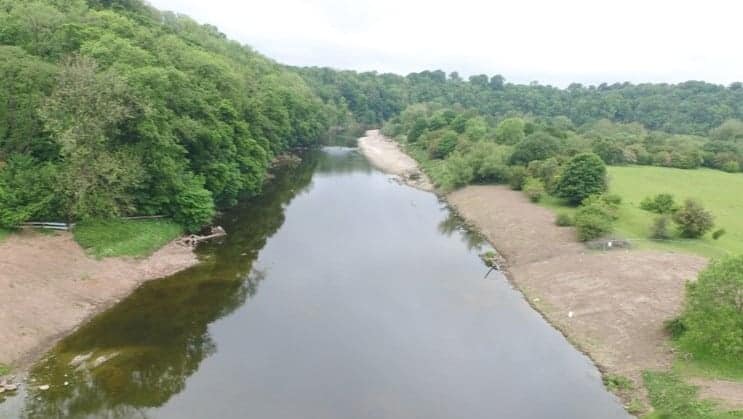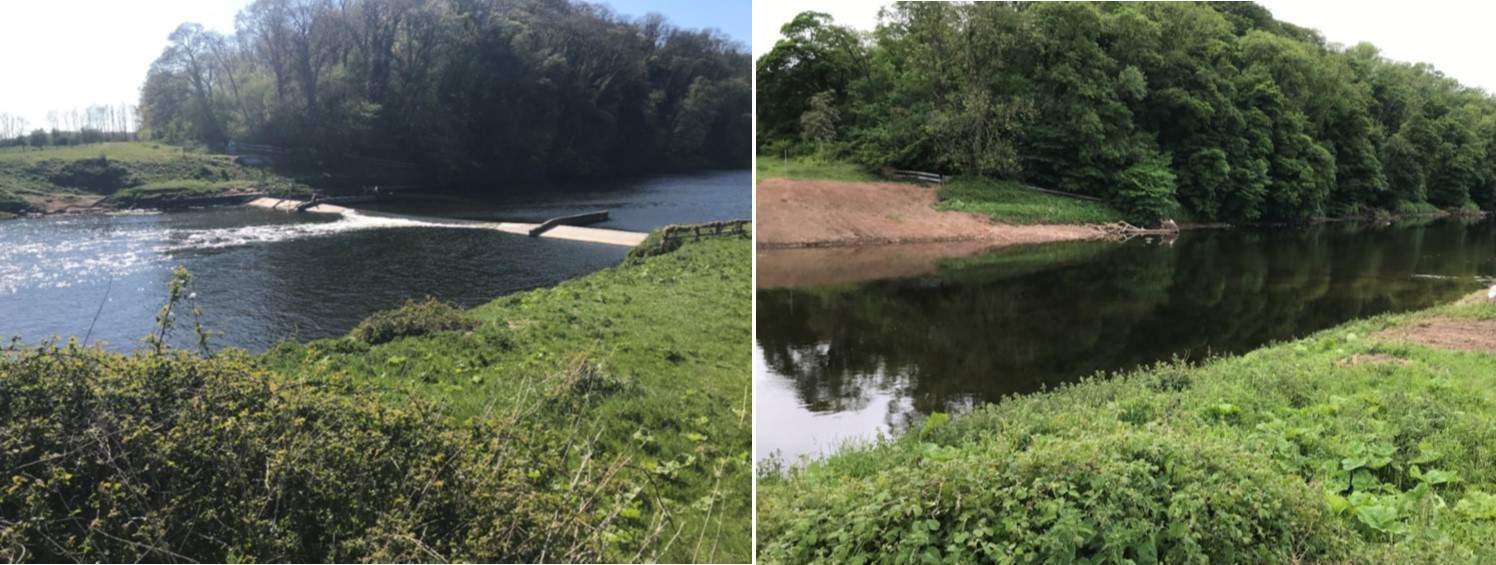Ribble Rivers Trust are happy to announce that our work to remove Samlesbury weir is now complete. As with all our weir removals and fish passage projects we are happy that our work has made this stretch of river more wildlife and fish friendly, but it is also significant as this redundant 50 year old weir was one of the first barriers that fish faced when migrating up the river, and also one of the widest. Staff and contractors remain on site to tidy and reinstate the area where work has been carried out.
Originally built in the 1970s to monitor flows on the Ribble, the monitoring station was decommissioned some time ago, leaving the weir in place. Barriers such as this weir are problematic for several reasons, including affecting the natural flow of the river and the sediments the river carries as part of its natural processes.
Weirs also prevent the movement and migration of fish. Whilst a weir which is small in height such as Samlesbury might not pose a serious problem to larger fish migrating upstream, they do slow them down. Juvenile fish are also delayed whilst heading downstream back to the sea, and in both cases these delays make them much more vulnerable to predators. Young eels (known as elvers) are also often victims of predation near weirs, as poor swimmers they may manage to wiggle over weirs, but this makes them much more visible and vulnerable.
The works are part of the new Ribble Life for Water Scheme supported by the Water Environment Grant administered by the Environment Agency, and funded by the European Agricultural Fund for Rural Development. A programme of 10 large-scale engineering projects, delivered largely by local contractors, will restore natural flows and improve water quality, habitat and biodiversity.



